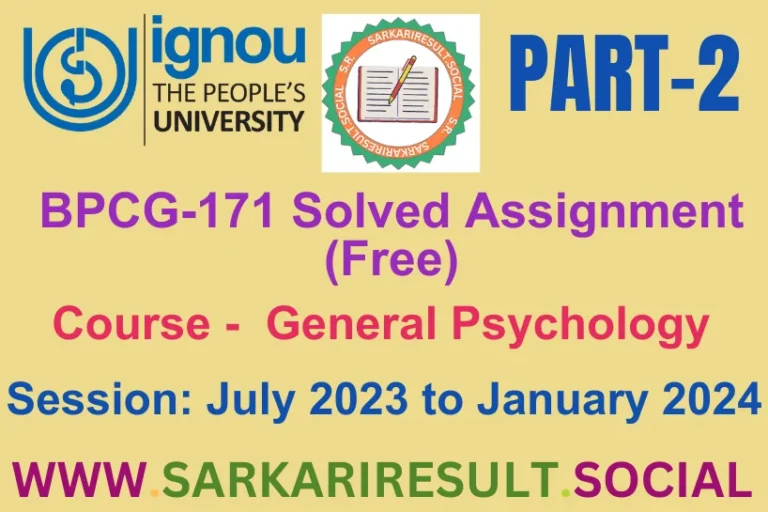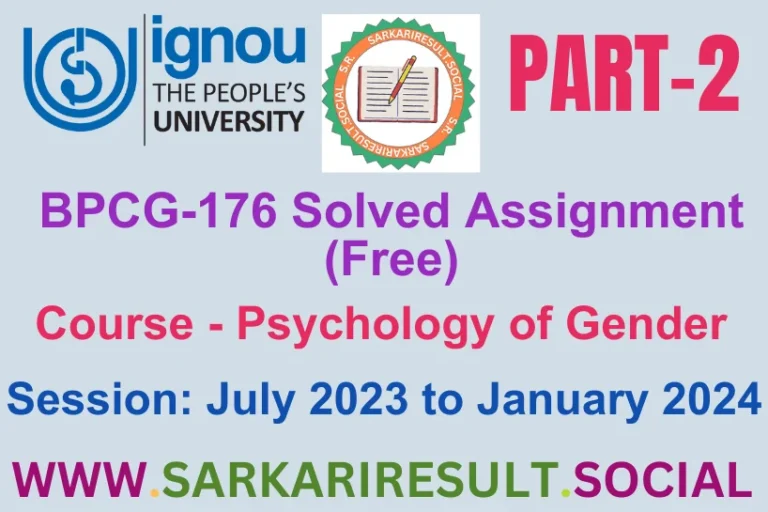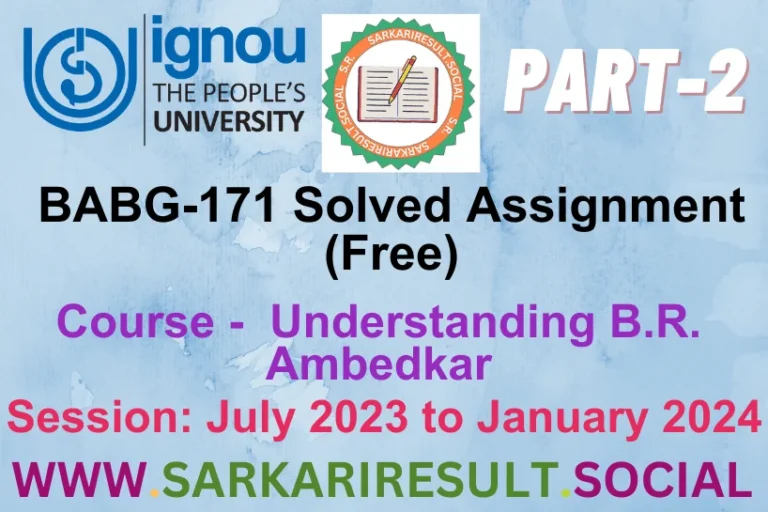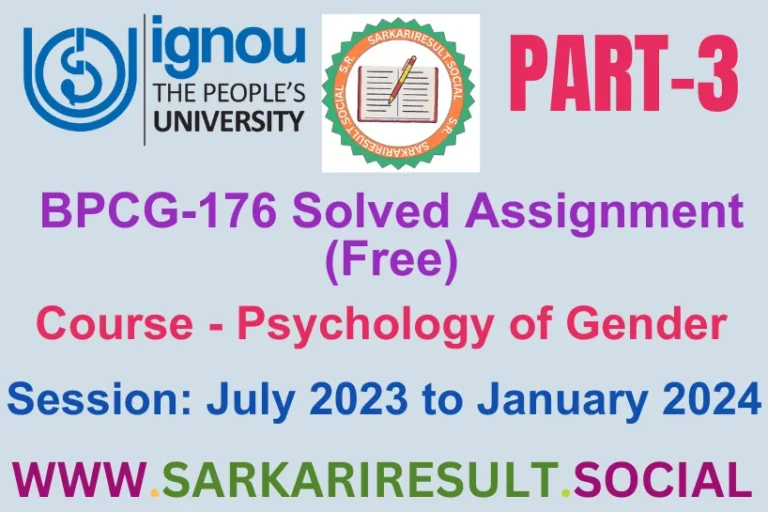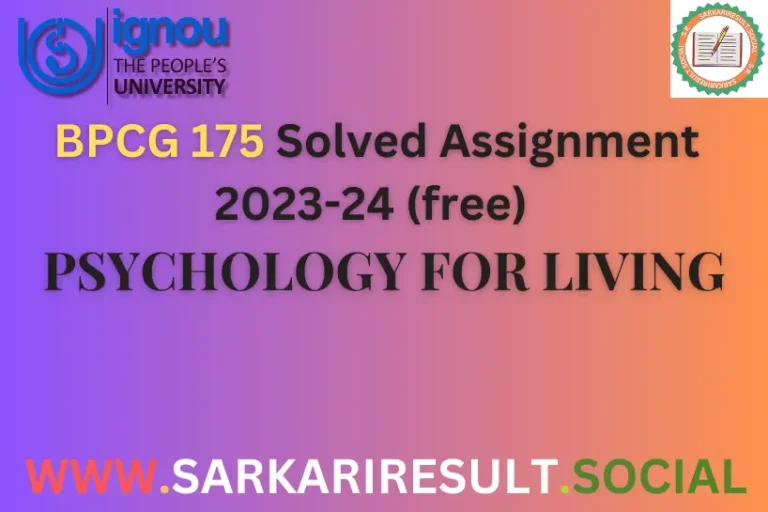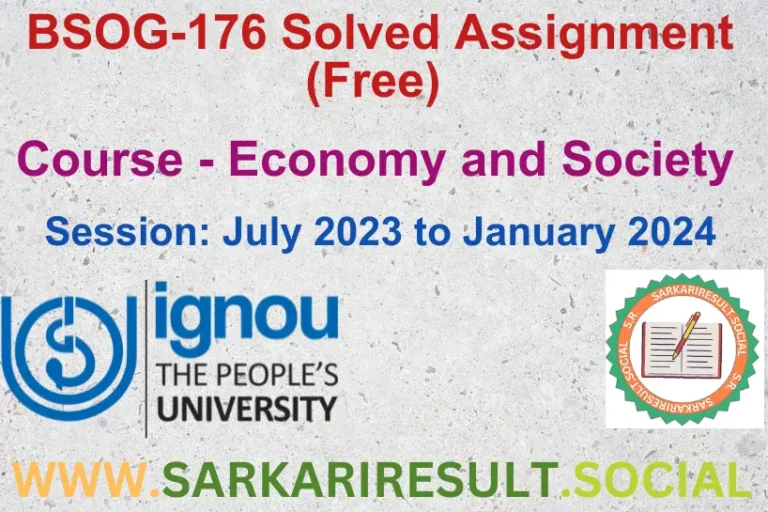BEGG 172 SOLVED IGNOU ASSIGNMENT FREE PART 1
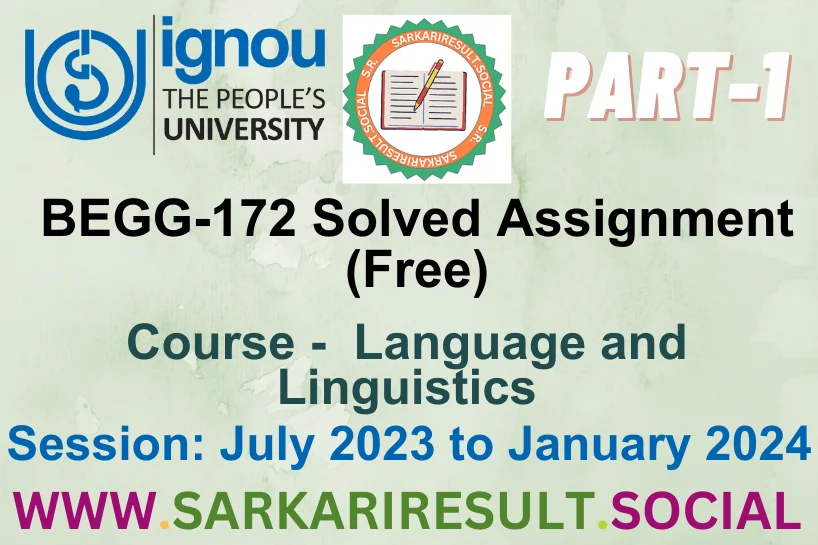
Dive into the intricate world of Language and Linguistics BEGG 172 SOLVED IGNOU ASSIGNMENT FREE PART 1 with our expertly crafted IGNOU Solved Assignments 2024. Explore Section A, answering questions based on Blocks 1 and 2 with precision. Unravel the meaning of creativity and arbitrariness in describing a property of human language, delve into the nature of multilingualism in India, define syllables with illustrative examples, and understand English consonants with brief discussions and suitable examples. Each answer is meticulously presented within 300 words, providing a comprehensive understanding of the course material.
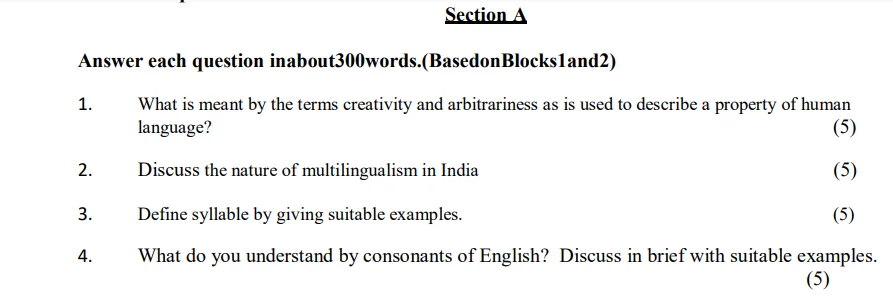
Answer each question in about 300 words. (Based on Blocks 1 and 2)
Q.1 What is meant by the terms creativity and arbitrariness as is used to describe a property of human language?
Ans. Creativity and Arbitrariness in Human Language:
1. Creativity:
Definition: Creativity in the context of human language refers to the ability to generate an infinite number of novel and meaningful utterances. It is the hallmark of linguistic productivity, allowing speakers to produce and comprehend sentences they have never encountered before.
Key Aspects:
– Infinite Combinatorial System: Language is not limited to a fixed set of expressions. Speakers can combine words and rules in novel ways, giving rise to an inexhaustible range of meaningful utterances.
– Novel Expression: Speakers can create and understand new sentences effortlessly, adapting to evolving contexts and needs. This dynamic quality allows language to evolve continuously.
Examples:
– When we say, “The purple elephant danced gracefully on the moon,” we are using creativity to combine familiar words into a new, coherent expression.
2. Arbitrariness:
Definition: Arbitrariness refers to the lack of inherent connection between linguistic signs (words or symbols) and their referents (the things or concepts they represent). In other words, the relationship between the sound or symbol of a word and its meaning is arbitrary.
Key Aspects:
– Symbolic Nature: Words are symbols that represent objects, actions, or ideas, and these connections are established by convention rather than inherent meaning. For instance, there’s no inherent reason why a four-legged, furry animal is called a “dog.”
– Cultural Convention: The meanings attached to linguistic signs are often culturally determined. The same concept may have different names in different languages.
Examples:
– The word “tree” has no inherent connection to the tall, woody plant it represents. In another language, a completely different sound or symbol might be used to convey the same concept.
Conclusion:
Together, creativity and arbitrariness contribute to the richness and flexibility of human language. Creativity enables us to generate an endless array of expressions, while arbitrariness highlights the conventional and culturally contingent nature of the relationship between linguistic signs and their meanings. These properties distinguish human language as a dynamic, ever-evolving system of communication.
Q.2 Discuss the nature of multilingualism in India
Ans. Nature of Multilingualism in India:
1. Linguistic Diversity:
India is a linguistic kaleidoscope, characterized by an extraordinary diversity of languages. The Constitution of India recognizes 22 officially recognized languages, but the number of languages spoken across the country exceeds 120. These languages belong to various language families, including Indo-Aryan, Dravidian, Austroasiatic, Tibeto-Burman, and more.
2. Regional Variation:
Each state in India often has its own official language, contributing to a multilingual environment. For example, Hindi is the official language at the national level, but various states have their own official languages, such as Tamil in Tamil Nadu, Telugu in Andhra Pradesh, and Bengali in West Bengal.
3. Language Families:
India hosts languages from several distinct language families. Indo-Aryan languages dominate in the northern and central regions, Dravidian languages in the southern part, and various others in specific pockets, creating a rich linguistic tapestry.
4. Code-Switching and Diglossia:
Multilingualism in India is not just about individuals speaking one language; it often involves code-switching, where individuals seamlessly switch between languages within a single conversation. Additionally, there is diglossia, where individuals may use one language for formal or official communication and another for everyday conversations.
5. Cultural and Social Significance:
Languages in India are not just a means of communication but are deeply intertwined with cultural and social identities. They carry historical significance, and the preservation of linguistic diversity is seen as essential to maintaining the cultural richness of the nation.
6. Language Policy:
India has adopted a policy of linguistic pluralism, recognizing the importance of preserving and promoting different languages. Efforts are made to ensure the availability of educational resources, literature, and government services in various languages.
7. Challenges and Harmony:
While linguistic diversity is a source of strength, it also poses challenges in terms of communication, education, and administration. However, India has historically shown a remarkable ability to maintain harmony among its multilingual population, emphasizing unity in diversity.
Conclusion:
Multilingualism in India is not just a linguistic reality but a deeply ingrained aspect of its cultural and social fabric. It reflects the nation’s historical development, diversity, and commitment to embracing various languages as integral parts of its identity. Balancing linguistic diversity with a sense of national unity continues to be a dynamic aspect of India’s complex sociolinguistic landscape.
Q.3 Define syllable by giving suitable examples.
Ans. A syllable is a basic unit of speech that is organized around a single, uninterrupted sound made by the human voice. It typically consists of a vowel sound and may be accompanied by surrounding consonant sounds. Syllables play a crucial role in language, providing a rhythmic structure to words and sentences.
Components of a Syllable:
1. Nucleus (Vowel): Every syllable must have a vowel sound, which is the core or nucleus of the syllable. This is the part of the syllable that carries the most acoustic energy.
2. Onset (Consonant Cluster): The onset is the initial consonant or consonant cluster that precedes the vowel. It helps shape the beginning of the syllable.
3. Coda (Consonant): The coda is the final consonant or consonant cluster that follows the vowel. It shapes the ending of the syllable.
Examples of Syllables:
1. One-Syllable Words:
– Cat: /kæt/ (1 syllable) – The vowel “a” is the nucleus, and the consonant “c” forms the onset.
– Dog: /dɔɡ/ (1 syllable) – The vowel “o” is the nucleus, and the consonant “d” forms the onset.
2. Two-Syllable Words:
– Ba-by: /ˈbeɪ.bi/ (2 syllables) – The first syllable has the vowel “e” as the nucleus, and “b” as the onset. The second syllable has “i” as the nucleus, and no onset but “b” as the coda.
– Sil-ver: /ˈsɪl.vər/ (2 syllables) – The first syllable has the vowel “ɪ” as the nucleus, and “s” as the onset. The second syllable has “ə” as the nucleus, and “r” as the coda.
3. Three-Syllable Words:
– El-e-phant: /ˈɛl.ɪ.fənt/ (3 syllables) – The first syllable has the vowel “ɛ” as the nucleus, and “l” as the onset. The second syllable has “ɪ” as the nucleus and no onset but “l” as the coda. The third syllable has “ə” as the nucleus, and “f” as the onset.
Understanding syllables is essential for various aspects of language, including pronunciation, phonetics, and the rhythmic structure of poetry and speech. It provides a framework for organizing sounds in a way that is fundamental to effective communication in spoken language.
Q.4 What do you understand by consonants of English? Discuss in brief with suitable examples.
Ans. In English, consonants are one of the two main categories of speech sounds, the other being vowels. Consonants are characterized by obstructed or restricted airflow, often involving the coordination of articulatory organs like lips, tongue, teeth, and the vocal cords. They play a crucial role in forming the skeletal structure of words and contribute to the overall intelligibility and rhythm of spoken language.
Key Characteristics of Consonants:
1. Obstruction of Airflow: Consonants involve a partial or complete restriction of airflow, creating distinct speech sounds.
2. Articulation Points: Consonants are classified based on where the airflow obstruction occurs in the vocal tract. Articulation points include the lips, tongue, teeth, and the back of the throat.
3. Voicing: Some consonants involve the vibration of the vocal cords (voiced), while others do not (voiceless). For example, the “b” sound in “bat” is voiced, while the “p” sound in “pat” is voiceless.
4. Nasality: Some consonants, called nasals, involve airflow through the nasal cavity. Examples include “m,” “n,” and “ng” (as in “sing”).
Examples of English Consonants:
1. Voiced Consonants:
– /b/ (as in “bat”): This sound is produced by closing the lips and vibrating the vocal cords.
– /d/ (as in “dog”): Created by placing the tongue against the alveolar ridge and vibrating the vocal cords.
2. Voiceless Consonants:
– /p/ (as in “pat”): Produced by a sudden release of air after complete closure of the lips.
– /t/ (as in “top”): Created by placing the tongue against the alveolar ridge with no vocal cord vibration.
3. Fricatives:
– /f/ (as in “fish”): Produced by forcing air through a narrow constriction between the upper teeth and lower lip.
– /s/ (as in “snake”): Formed by a hissing sound created by a narrow constriction between the tongue and the alveolar ridge.
4. Nasal Consonants:
– /m/ (as in “mother”): Created by closing the lips and allowing air to pass through the nasal cavity.
– /n/ (as in “night”): Produced by placing the tongue against the alveolar ridge while allowing air through the nasal cavity.
Understanding consonants and their variations is essential for accurate pronunciation and effective communication in English. The diversity of consonant sounds contributes to the richness and expressiveness of the language.
Also See This: BEGG 172 SOLVED IGNOU ASSIGNMENT FREE PART 2

